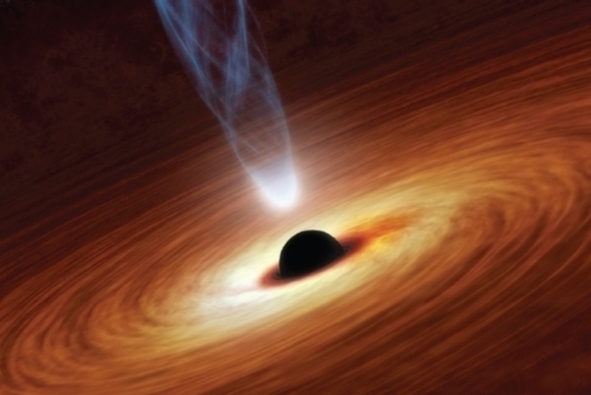Astronomers Measure How Fast a Supermassive Black Hole Is Spinning

To do so, they looked to a second black hole orbiting the first
By Caleb Scharf on May 1, 2016
Black holes may be massive, but they are also extraordinarily compact. That combination of properties makes them challenging regions to evaluate across vast cosmic distances. To learn more about these objects' physical properties, astronomers must therefore come up with measuring tricks. An international team of astronomers recently invented a new one: in the Astrophysical Journal Letters, the members report how to determine a black hole's spin using the interactions of two giant holes bound in mutual orbit.
OJ 287, a binary supermassive black hole system, sits about 3.5 billion light-years from Earth. The duo's primary black hole weighs in at an estimated 18 billion solar masses; the second is a mere 150 million solar masses. Because of this dramatic inequality in size, the smaller hole follows an orbit that punches through a disk of superheated matter swirling around the larger hole. These “outburst” events always occur within a 12-year orbit and are read by astronomers as changes in the system's visible light, which is for the most part produced by the superheated material.
Link of the article : http://arxiv.org/abs/1603.04171
See full text